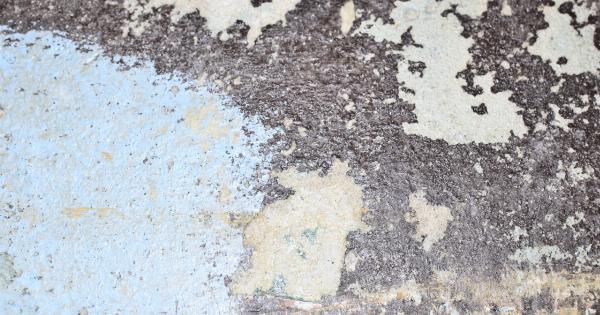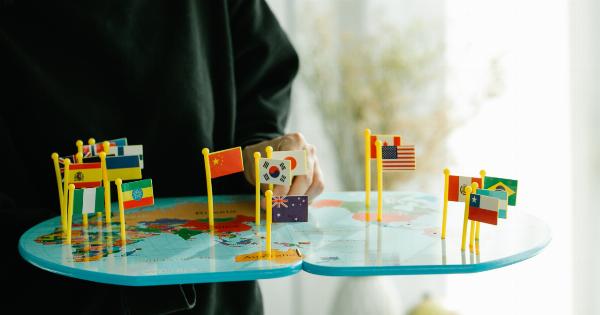Having a toddler at home can be an incredibly fulfilling and joyous experience. Watching them grow, learn, and explore the world around them is truly remarkable. However, there is a downside to having these little bundles of energy in your home.
They have a peculiar knack for making your belongings disappear.
The Mystery of the Disappearing Items
You may have experienced the frustration of looking for your keys, phone, or wallet only to find them in the most unlikely places. Well, chances are your toddler had a hand in their relocation.
Toddlers are naturally curious beings who are constantly discovering new things and experimenting with their surroundings. Unfortunately, this curiosity often leads to them misplacing or hiding objects.
It’s not uncommon to find your important documents stashed away in the toy chest or your jewelry hidden in a shoe. These little detectives seem to find nooks and crannies you didn’t even know existed in your home.
They have an uncanny ability to locate places that even you have forgotten.
The Thrill of Thieving
Why do toddlers take such delight in stealing and hiding your belongings? Well, it’s not out of malice or a desire to cause chaos. For them, it’s an exciting game.
They are exploring cause and effect, learning about ownership, and testing boundaries. Additionally, the reactions they receive from you when you discover their “treasure” only serves to reinforce their behavior.
It’s important to remember that toddlers don’t fully understand the value or importance of the items they’re stealing. To them, it’s just another interesting object to experiment with.
They may even forget about it minutes after hiding it.
The Most Commonly Stolen Items
Now that we’ve established that your toddler is the culprit behind the missing keys and misplaced socks, let’s look at some of the most commonly stolen items:.
1. Keys
Keys seem to hold a special fascination for toddlers. They love the jingling sound and the way they can insert them into locks. So, don’t be surprised if you find your keys mysteriously missing.
Check the most unexpected places, like the laundry basket or under the couch cushions.
2. Remote Controls
Toddlers are fascinated by buttons and gadgets, so remote controls are like a treasure trove for them. You might need to search the toy box or your toddler’s pockets to recover the missing remote.
3. Wallets and Purses
Toddlers are naturally drawn to items that they see you using frequently. Wallets and purses contain numerous compartments and interesting items, making them irresistible.
You might find your wallet tucked away in a kitchen cabinet or your purse hidden inside a shoe.
4. Cell Phones
Cell phones are mini-computers that capture a toddler’s attention with their bright screens, sounds, and buttons. They love mimicking their parents’ behavior, so grabbing your phone and wandering off with it is not uncommon.
5. Small Toys
Toddlers often like to collect small toys and place them in their secret hiding spots. Don’t be surprised if you find a stash of toy cars under the bed or a collection of building blocks tucked away inside a cereal box.
6. Jewelry
Shiny, sparkly objects like jewelry are particularly enticing to toddlers. Necklaces, bracelets, and earrings can easily pique their interest. Be sure to check the bathroom, as these treasures might end up in a water-filled cup or down the sink drain.
7. Shoes
Toddlers have a thing for shoes. Whether it’s their own tiny shoes or your larger ones, they find great joy in taking them for a tour around the house.
You might stumble upon your missing shoes in the most unusual places, like the laundry basket or behind the couch.
8. TV Remotes
Similarly to regular remote controls, TV remotes offer multiple buttons to press and plenty of entertainment for inquisitive toddlers. You may find yourself searching their toy box or even the refrigerator to retrieve the remote.
9. Important Documents
Toddlers have a way of discovering and “reorganizing” important documents, such as bills or important mail. You might need to check all the drawers in the house to locate your missing paperwork.
10. Glasses and Sunglasses
If you wear glasses or sunglasses, be prepared to find them in unusual places. Toddlers love trying them on and seeing the world through tinted lenses. Check the bathroom or the toy box, as that’s where they might turn up.
Preventing the Great Heists
While it’s impossible to completely eliminate the risk of your toddler snatching your belongings, there are some measures you can take to minimize the occurrences:.
1. Childproof Your Home
Ensure that your home is childproofed. Use safety gates to restrict access to certain areas, such as your office or bedroom, where you store important items. Secure cabinets and drawers with childproof locks to prevent easy access.
2. Create Child-Friendly Spaces
Designate specific areas in your home where your toddler can freely explore and play. Equip these spaces with age-appropriate toys and activities to distract them from venturing into areas where valuables are kept.
3. Establish Boundaries
Talk to your toddler about personal space and respecting other people’s belongings. Use simple language and reinforce the message consistently. This will start to build an understanding of ownership and boundaries.
4. Offer Alternatives
Provide your toddler with their own set of keys, a toy phone, or a wallet filled with play money. Encourage them to use these items when they feel the urge to “borrow” something of yours.
This diversion tactic may help minimize their interest in your belongings.
5. Keep Valuables Out of Reach
Store your valuables in higher places or locked drawers, beyond your toddler’s reach. This will reduce the temptation for them to snatch and hide these items.
6. Develop a Cleaning Routine
Make it a habit to regularly tidy up and declutter your home. By keeping your space organized, you’ll have a better chance of quickly noticing if something goes missing.
7. Practice Patience
Remember that your toddler is still learning and exploring the world. Instead of getting angry or frustrated when something goes missing, approach the situation with patience. Keep in mind that their actions are not deliberate attempts to upset you.
8. Investigate Together
When something goes missing, involve your toddler in the search. This not only teaches them about responsibility but also helps develop their problem-solving skills.
Make it a fun game of “treasure hunting” and celebrate when the missing item is found.
9. Do a Daily Check
Before settling down for the night, take a few minutes to do a quick walk-through of your home. Look for any items that may have been misplaced or hidden by your little one. This will save you from frantic searches in the morning.
10. Stay Calm and Carry On
Keep in mind that the phase of constant disappearing acts will eventually pass. Toddlers are exploring their world, and their curiosity is a sign of healthy development.
So, take a deep breath, stay calm, and remember that it’s just part of this exciting stage of parenthood.































